Q&A Time! Learning About Mecha Combat Game Obsidian Protocol!
October 1, 2019 by brennon
We got a chance to talk to Ren Yi De who has taken to Kickstarter with the mecha combat game Obsidian Protocol which features some stunning looking models.
Check Out The Kickstarter Here
Come and find out more about the game here...
Ben: First off, could you tell us a little more about who you are at Que-ti Studio and where you started in the tabletop gaming world?
Ren Yi De: My name is Ren Yi De, the producer, game designer and mech designer of Obsidian Protocol. I also took up the pen and wrote the lore for the game. Tabletop gaming is not a common hobby in China and the old favourite of Monopoly is probably the only tabletop game I played when I was a child!
My first contact with miniature wargames is back when I was in junior high. There was a magazine about models called “模型世界 (The World of Models)” and in it, they wrote a few chapters about Warhammer and those elegant miniatures just blew me away. That was then what inspired my curiosity in wargames. However, at that time the miniatures were too expensive for me and when I was in high school I finally got my first box of miniatures in the board game, Space Hulk.
I was also very fond of designing mecha and Sci-Fi vehicles even back then so I tried to create a story when looking at the lore for Obsidian Protocol where dozens of megacorps struggle with each other, fighting over resources, building a story where each one of these corporations has their own unique product lines and technologies. I placed all my mecha designs into this world and it became the embryo of what you see in Obsidian Protocol today on Kickstarter.
During 2010 when I was in college a few friends and I decided to make our own game and it, of course, turned into a miniature wargame and that’s how we started the Obsidian Protocol project, which was called "Ashes: Dark Side Of The Moon" then.
B: You are currently running a Kickstarter for your game, Obsidian Protocol. Could you tell us a little bit about the background of the game and how you thought it up?
RYD: In the story of Obsidian Protocol, there are two vital settings which encompass the Relics and the “Obsidian Protocol”.
In the timeline of Obsidian Protocol, around the end of the 21st Century, humanity discovered vast underground artificial ruins on the dark side of the moon; Relics. Within the Relics, humanity extracted high-tech resources that were far beyond our understanding.
They can be activated and used, but could never be analyzed or disassembled. That is where they got the title of the “black boxes”. Conflict around these black boxes gradually escalated and finally sparked the Great War that devastated the entire human world. When this war without winners eventually came to an end, the traditional concept of country and state was difficult to maintain.
Fast forward through a few decades and three major communities replaced the positions of old-world countries. They maintained peaceful societies and cooperated in various fields of research to rebuild human civilization. However, they continued the endless conflict for the Relics as none can ignore the treasure sleeping in these ruins.
The “Obsidian Protocol”, which is the name of this game, is actually a product of black box technology. Before the Great War, other than agent companies backed by powerful countries, there were a rare few private organizations standing their ground in the competition over Relics, one of them was called Layton Technology. Layton Technology developed a revolutionary technology - an algorithm to transform human consciousness into digital form - the “Obsidian Protocol” as we know it now.
In the initial period, this technology provided API (general interface) for human brains, and later developed a series of civilian products based on it, but what really made Layton Technology a political superpower is the overwhelming military implementation of this technology.
Through the use of the obsidian protocol, human consciousness can be digitized then copied, recreating full robotic super soldiers. The technology itself is highly encapsulated and can't be cracked at all. Its production method is also the secret of Layton Technology, rendering them completely irreplaceable in the field of military technology.
The obsidian protocol, as the trump card in the hands of Layton Technology, then allowed them to gain absolute control over a small part of the relics. By digitizing human consciousness, full robotic super-soldiers finally became more prevalent on the battlefield, their combat frames kept getting bigger and bigger, pushing the mental limit of these digitized soldiers, eventually, becoming the mechs standing over four meters tall we see today.
Besides the relics and the obsidian protocol, the three major communities are the real protagonists in the background story, each of which has its own unwavering beliefs...
The Reconstruction & Development League regards the reconstruction of human society and the maximization of collective happiness as their ultimate goal. They consider sacrificing the interests of individuals for the greater good when necessary, a justifiable approach. Every facet of life in the League is guided by a massive AI called the MENTOR, which manages industrial priorities and citizens' daily routines to maximize economic development and public satisfaction. Although many see the RDL "neo-utilitarian" society as totalitarianism, its efficiency and strength have indeed helped countless people out of the miserable quagmire brought on by the Great War.
The United Network is a consortium of mega-corporations. They rebuilt a great number of important science and technology foundations soon after the war and established a powerful political standing through their resources and technological advantages. Unlike the RDL, the United Network is guided by its internal economy. They also hope to restore the human world back to its prosperousness before the war, but they do not rule out the business practice in this process. In fact, they believe that a consummate business environment is the foundation of reconstruction because it will give people endless motivation.
The Guardian Of Freedom is a faction much smaller than the two mentioned above. Their origin is as a small group of people who oppose consciousness-digitizing technology. They believe that the greatness of mankind lies in absolutely free will. The war has devastated our civilization, and that’s why the human spirit should shine brighter than ever. In their eyes, the obsidian protocol is untrustworthy technology which free will is not guaranteed, so they never accept the act of fully digitizing consciousness. These lofty beliefs have gradually evolved into the worship of the human brain, so they believe what makes human "human" must be based on the premise of retaining at least a part of the brain tissue.
When I first conceived the background settings, all I wanted was to build companies with different characteristics and let them fight with super mechs. Later, as I grew older, I became more aware that a complete background setting required competing factions with their own goals and ideology. The conflict of ideas and struggle for interests makes the actions of people in this world believable, makes them legitimate.
B: Could you expand on that and tell us a bit more about the different factions in the game and how they are different from each other?
RYD: We have an enthusiastic player called LeeWings, who participated in the beta tests on many occasions, he wrote an introductory manual "Which faction should I pick?", I think part of it has the perfect answer for your question!
The Reconstruction and Development League
Pros...
- Their iconic feature is "cheap": it only takes about half of the deployment cost of other forces can assemble a MAP with proper combat capability, which easily yields them two to four more MAPs than their opponent in a standard game (500 points).
- The Blink frequency technology exclusive to RDL means they have the best melee performance - a perfect balance in power, parry, timing flexibility and additional action distribution, there are tons of melee weapons available for both arm, and the performance of their melee cores is second to none among the three factions.
- In addition, the RDL is also very good at using heavy machine guns, short-range combat missiles and a large number of autorifles to suppress the battlefield and apply interference pressure, and they are also very good at intercepting enemy projectiles.
Cons...
- Poor firearm performance, weaker stat buff using firearm and against firearm.
- The timing of actions outside of melee is not flexible enough (there’s an announcement that they are going to balance the "War General" core that’s related to this problem).
- Electric warfare - especially ECM - is costly, and considering the cheapness of its cannon fodder MAP the investment became even more unworthy, and its MAP does not have access to optical camouflage.
- The drones are not cost-effective.
The United Network
Pros...
- Best guns, the power and reliability of the medium-long distance firearms are superior, firearm stat buff is varied and easy to obtain, and their cost is very low.
- Jets, whip, stealth core and flying chassis grant them extraordinary battlefield entry/exit capability, with melee threats up to 33-34 inches(11 grids) and virtually no terrain restriction. Their mechs are better at dodging and manoeuvring than other factions.
- Backpacks and a large number of actions allows flexible timing selection, also making it difficult for the opponent to guess your tactical intention from the dials.
Cons...
- High average cost per mech and the combat effectiveness relies heavily on individual elite MAPs. While the firepower is sufficient but the coverage is not enough, and there will be a significant loss in combat power if any of your units gets destroyed.
- Lacking both long-range and short-range missiles, and the interception capability is also limited.
- The performance of the backpacks are excellent but most of them have a limited number of uses. Good in a pitch but not so much in the long run.
The Guardian of Freedom
Pros...
- A variety of drones with remarkable performance(their main battle drone can score an equal footing against the enemy MAP with three times or even four times the cost), while their MAP is far better than other factions in drone collaboration.
- Straightforward and aggressive electronic warfare, with the singular goal of accumulating interference or even straight shut down.
- Defensive components provide excellent survivability, and their unique assault type chassis have the apex double armour and stable high speed.
- The most reliable long-range missiles among all factions, they can launch a ridiculous saturation missile attack thanks to their cheap missile drones(we are talking about 12 missiles per round for two consecutive rounds).
Cons...
- VERY high cost per component and the least amount of MAPs deployed and heavily depend on the use of drones.
- Limited weapons for MAPs and lacks reliable long-range weaponry. Supporting fire is susceptible to interception.
- Although the main battle drones have high combat performance, they are highly susceptible to electronic attacks, and while countermeasures do exist, they will take up already tight deployment points.
I hope this gives you an interesting look at how each of the factions works in the game.
B: Could you tell us a bit more about how a typical game round of Obsidian Protocol plays out?
RYD: It would be a bit trivial to write down the detail of an entire round of Obsidian Protocol, but it will feel very smooth and not complicated when actually playing it yourself! At the start of every round we have the Drones Order Phase, where each one of your mech gives an order to one of the drones. The default order is move, some drones can use this order to attack or perform certain action.
Then you have the Planning Phase. Players must use dials to secretly select an action timing for every individual mech under their command, the timing is 1-6, all actions must then be performed at a specific time
Next, we have the important part, the Action Phase. All dials will now be revealed and players must now decide and execute the action for all their mechs. One mech can only perform one main action per round, plus a short, additional action if available. This means that all functional mechs can perform 1 to 2 actions during this phase.
After that, we are at the Drone Action Phase. Many drones have automatic actions, such as attacking the nearest "enemy"(if their IFF has been manipulated, they may treat friendlies as enemy targets), these automatic actions will be executed during this phase.
Later you have the Post-Action Phase. Projectiles such as missile or grenade will continue to fly or detonate at this phase, and some minor equipment will also take effect during this time.
Finally, the End Phase comes into effect where players need to remove some of the continuous effect tokens. You will then settle some "End Phase" effect, then after cooling their mechs you will conclude a round of Obsidian Protocol.
So as you can see we do have players taking long turns and instead allow both sides to act simultaneously. There is also a lot of stuff you can do each round. Even when targeted by enemy attack or electronic attack, you get to react by defending or dodging, etc making the game feel very dynamic.
B: It would be nice to know a little bit about the miniature design for your game and the steps you went through in bringing them to life?
RYD: Regarding the design of the model, we used a 1:35 ratio so the miniatures were much larger than what they look like now. Later, many players suggested that they want to mix our miniatures with other 28mm models, so we changed to 1:56 to make that easier. After the player receives the game post Kickstarter, they need to assemble each miniature component themselves too so there's a bit of assembly needed.
We will provide the corresponding magnets that players will also need to use. You can glue these magnets into the corresponding slots, and then these components can be magnetically attached to put together a mech allowing you to swap things around which we think is neat! Before each battle, you have the opportunity to adjust the configuration of each mech for the current mission.
When it comes to actually deploying your miniatures you can choose to set up a few powerful mechs or flood the battlefield with cheap cannon folders!
B: The Kickstarter also focuses in on a selection of expansion products for Obsidian Protocol. Could you tell us about those and what they offer to backers?
RYD: Firstly, we are not putting the powerful components in the expansions and the weaker ones in the core box, that just wouldn't be right. We will be making a lot of interesting expansions available which start to throw in more intricate and difficult to master techniques and styles. For example, the Scalpel expansion applies the theme of stealth, whether it is from assaulting up close or via long-range sniper.
The Tie’ji expansion focuses on supplementing the lack of speed and flexibility in the RDL faction. Of course, for many miniature enthusiasts, the most important thing is that the expansions provide a lot of new models to play with!
B: Mecha wargaming is a pretty awesome idea; could you tell us a bit about some of the inspiration that led you to create the game?
RYD: I’m SO into mechs and that's probably the sole reason why am I making this game! I like mech themed video games such as Front Mission and Armored Core. While I only tried one Armored Core game, their mech design really fascinates me and I will definitely try more when I got the time.
Battletech is another title I’m into but I only got to play the video game version of it. I really wish I can play these games with my friends more. On the one hand, we all know that mechs are not practical in reality, but on the other hand, there is an irresistible charm to these iron behemoth.
B: Where would you like to see things go next when it comes to Obsidian Protocol after Kickstarter?
RYD: First of all, of course, is production, to make sure we deliver a quality product. We are currently meeting with three of the most experienced military model manufacturers and will soon determine the final manufacturers.
Then, when the Kickstarter campaign is over, I will head over to their factories, and work with the engineers to finalize a plan on how to design the pieces and details about the model. We mentioned on a lot of occasions that we lack experience in this these kinda stuff and we are indeed telling the truth. However as I have communicated with these manufacturers more and more recently, I am getting more confident about the whole process.
Every year, a large number of tabletop games are produced there, and many staff from the factory have given us a lot of excellent suggestions, allowing us to better control the details. At the same time, we will continue to test and adjust to optimize the balance of the game, as there are currently some components and stats we are not satisfied with yet and require further polishing.
As for future content, we have long since determined that there will be a lot more different stuff in the future, including a biomechanical race, as well as some vehicles, infantry and spaceships. We have designed game mechanisms that are completely different from the mechs for these things, but they can be played together.
We have also received many questions on when are we going to do the cooperative mode against AI. As a matter of fact, this game was already a cooperative game as early as 2017-2018, but back then it was one player controlling the hive mind drones versus the rest of the players as an elite squad.
We eventually decided to work on a separate mech part as the first season of this product because we want to make a stable game first. The cooperative mode requires a tremendous amount of balancing and we need more time to prepare.
So don’t worry. We have left room for these future updates, but we need more time polishing it all!
It has been great learning about the Obsidian Protocol game and its world and we hope you're going to check out the Kickstarter soon.
Check Out The Kickstarter Here
Make sure to tell us in the comments below if this game is going to be on your list of Kickstarters to back!
Drop your comments below...
"During 2010 when I was in college a few friends and I decided to make our own game and it, of course, turned into a miniature wargame..."
Supported by (Turn Off)
Supported by (Turn Off)
"We have left room for these future updates, but we need more time polishing it all!"
Supported by (Turn Off)











































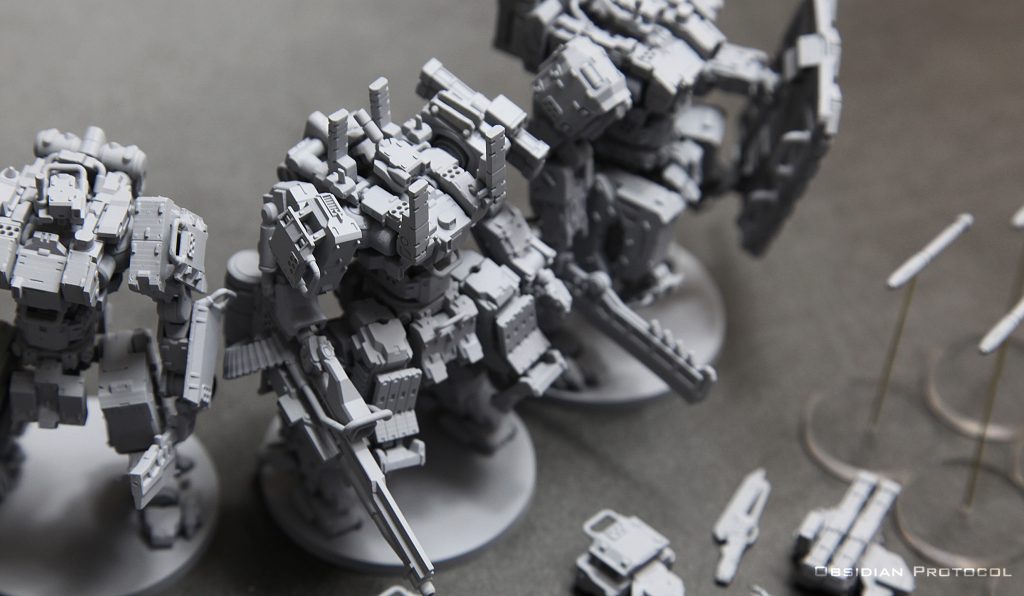
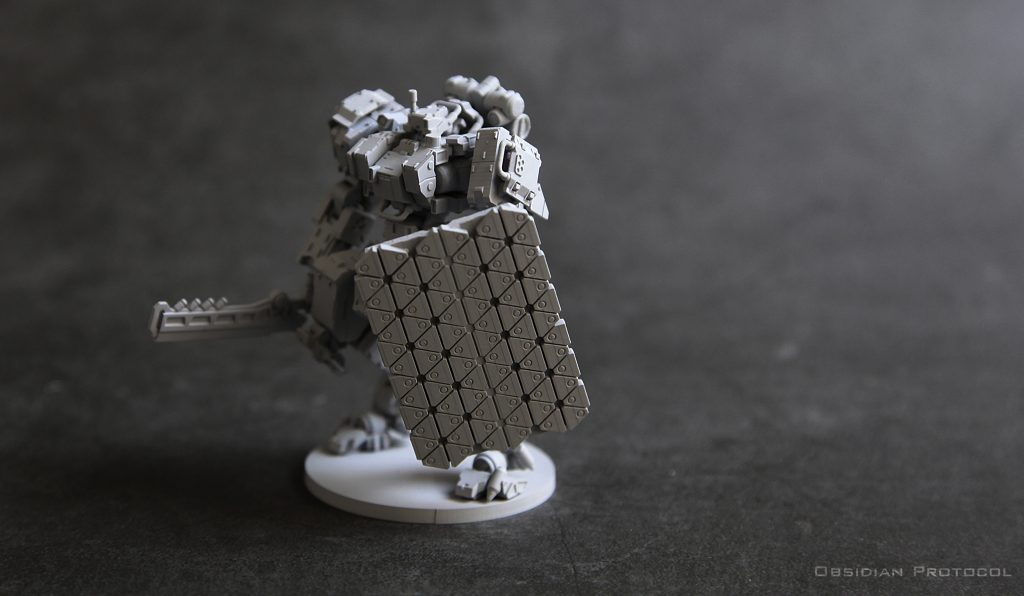

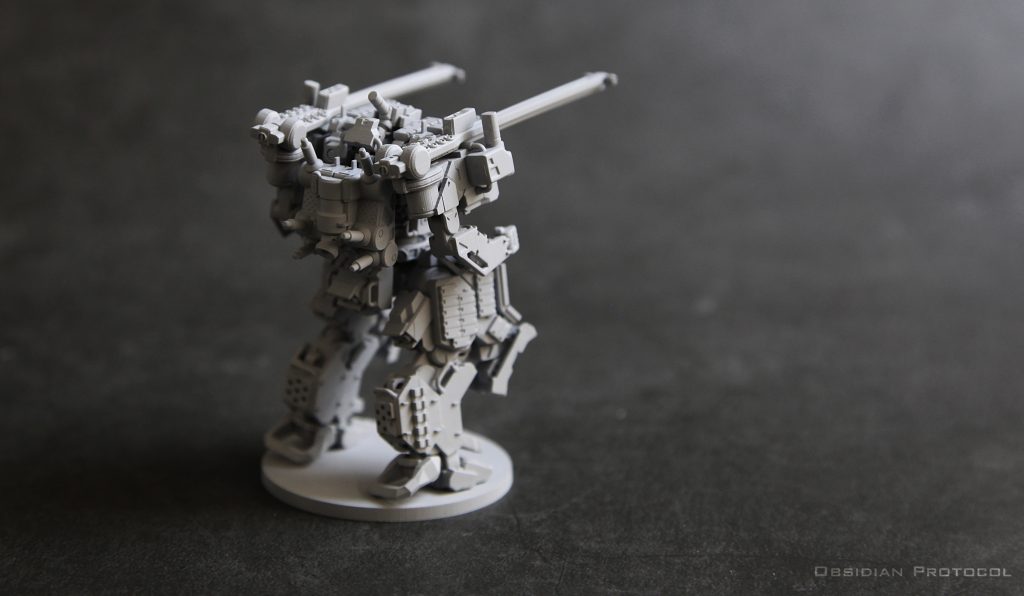
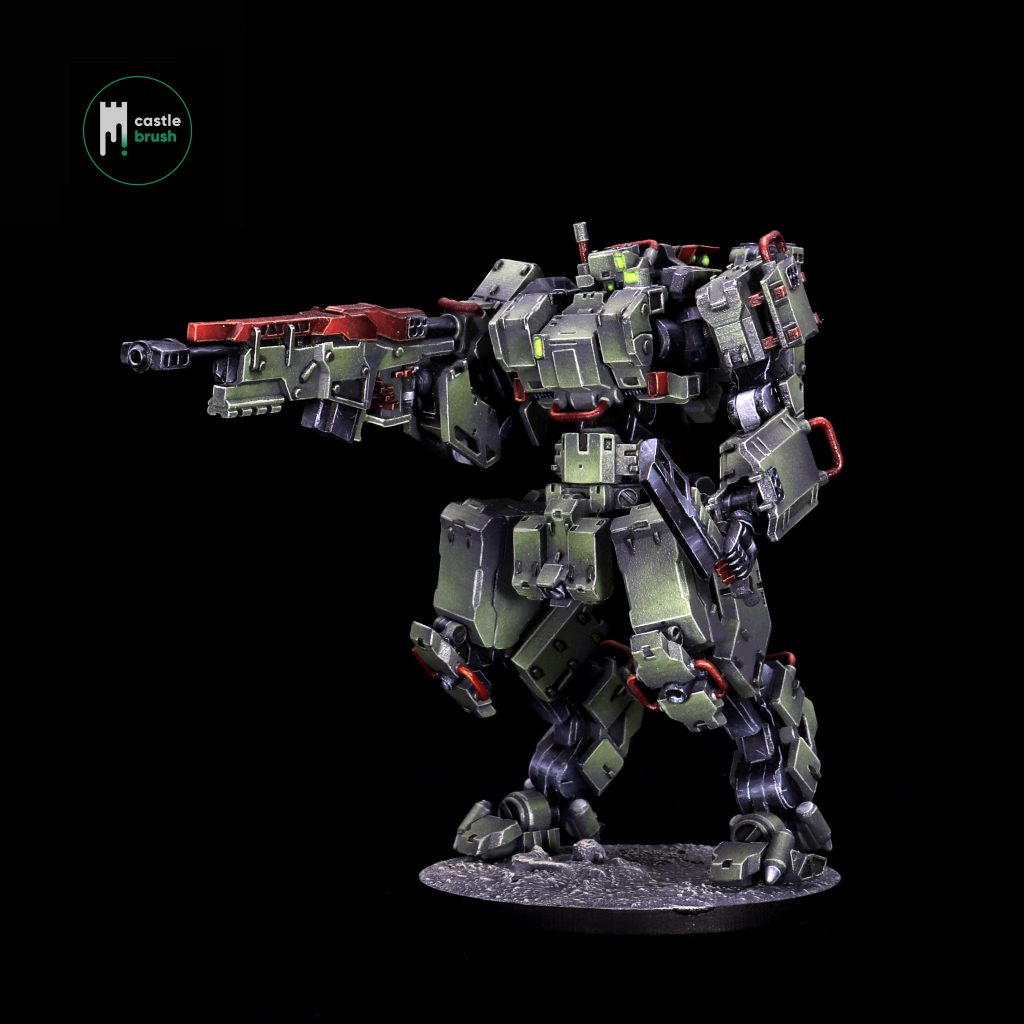
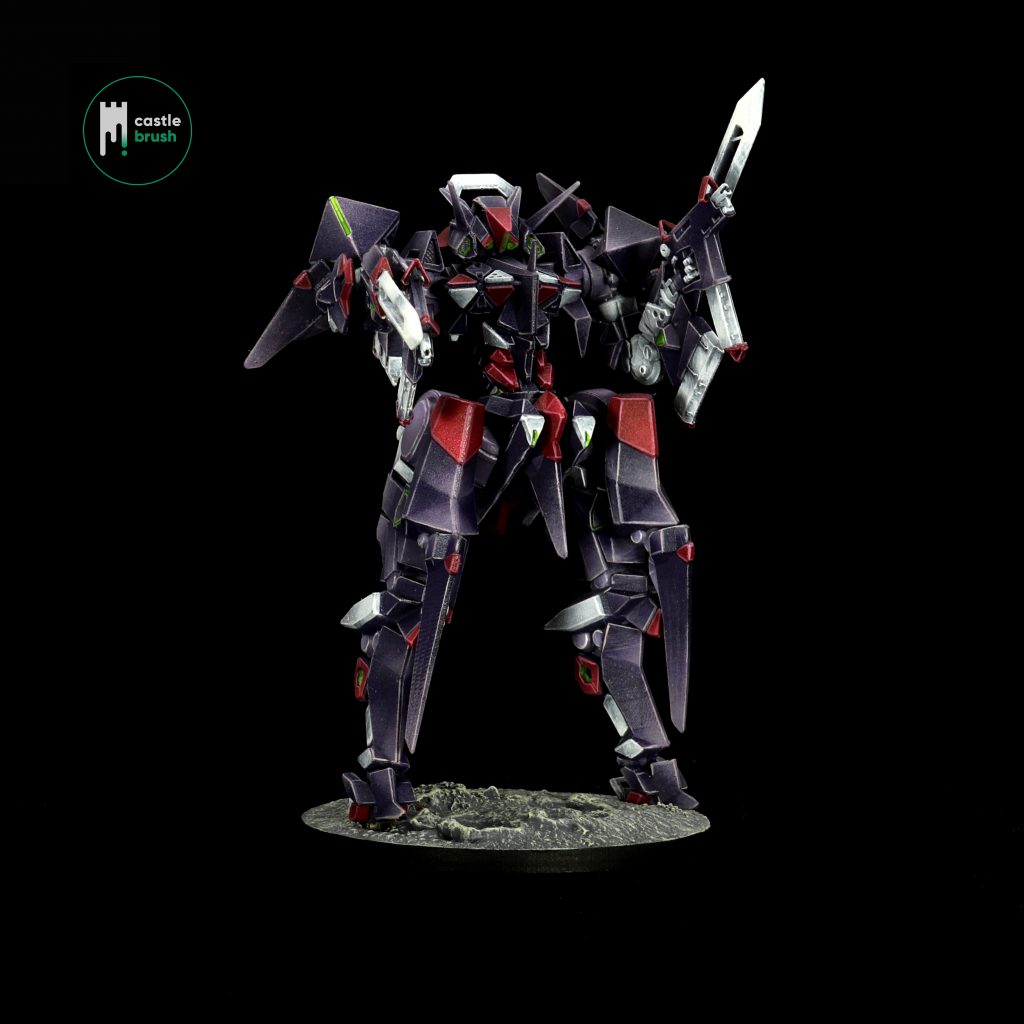
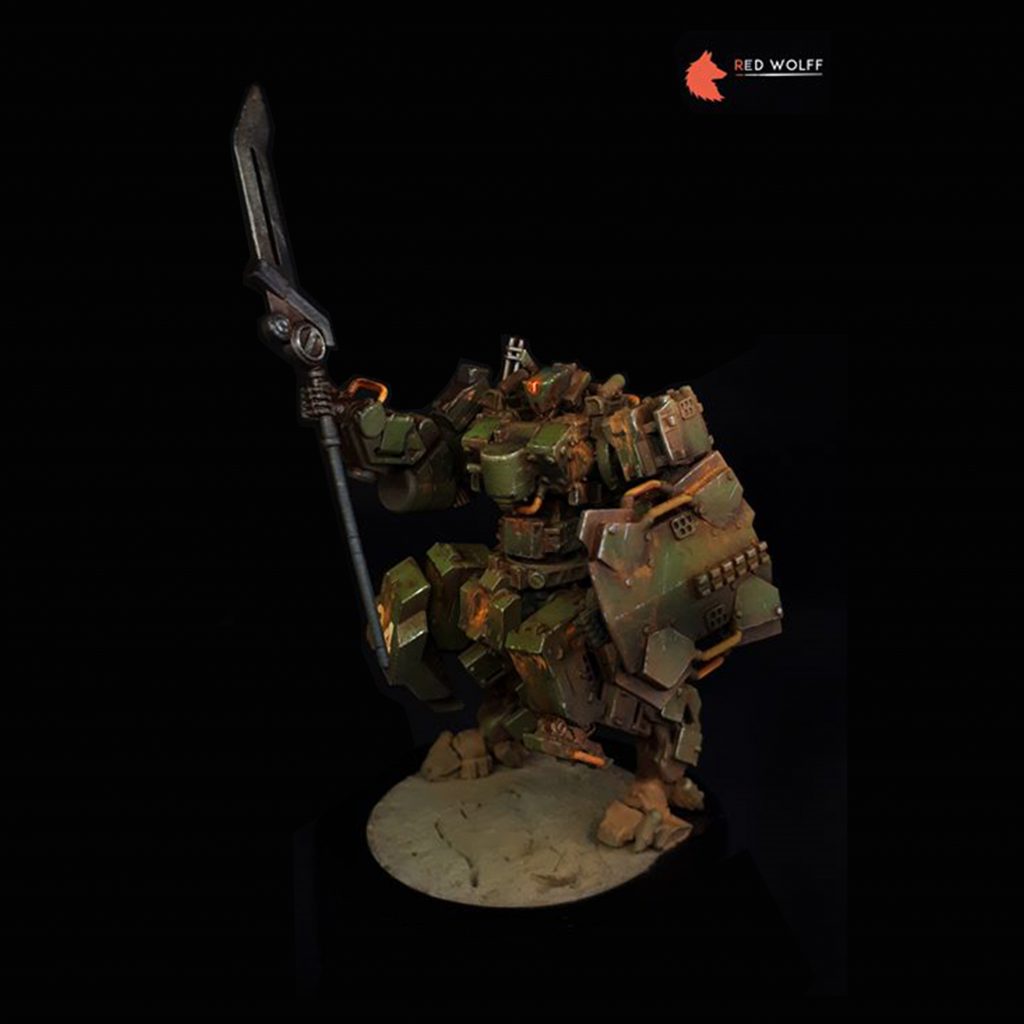
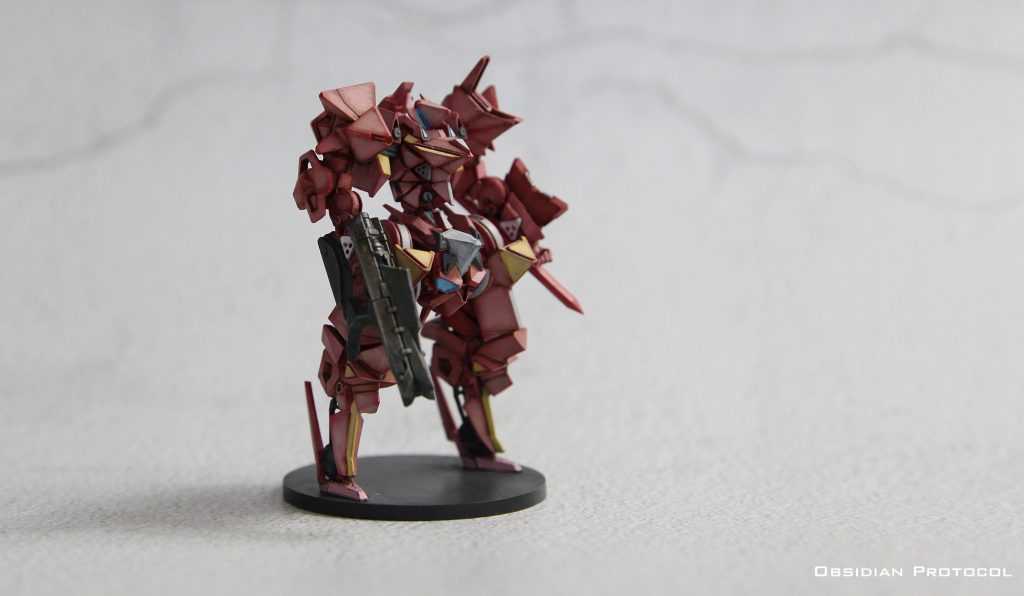
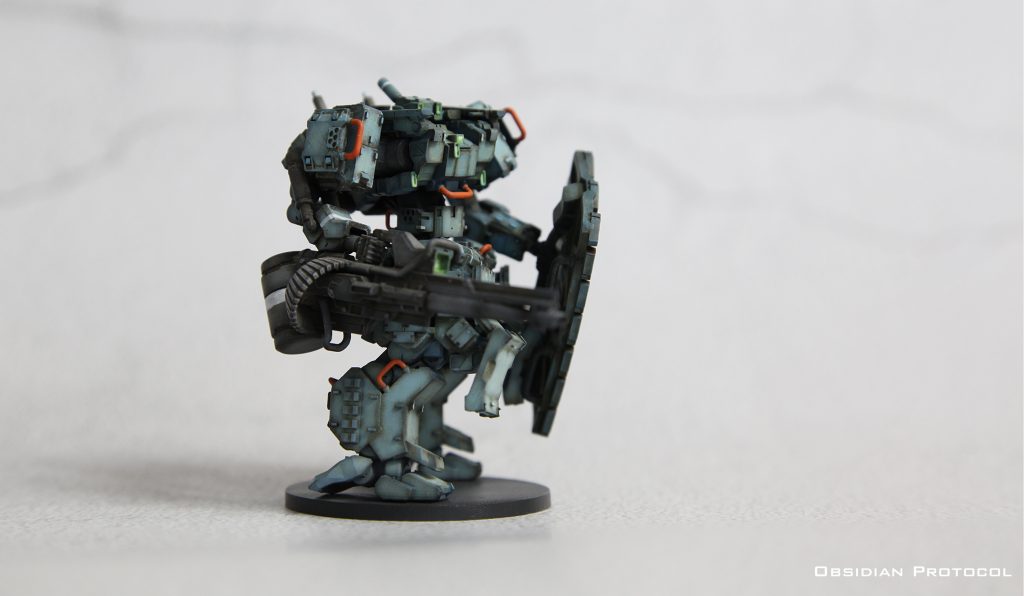


































28mm mecha? I am intrigued.
wait for the Weekender Shred, all will be revealed
Finally! a wargame that caters to my VERY specific tastes.
This looks amazing, the mobile suit models are incredible!
If it’s 28mm and the mechs are roughly 4m, does that mean the models are 60mm ish?
Would be great to know how big the models are!
I think in either the comments or the play through video they mention 80mm.
we have them and will be showing them off on the weekender this Saturday
I belive the mechs stand 80mm tall from pics I’ve seen.
Backed this with a full pledge (Warlord)
Came a bit out of nowhere.. but it intrigued me enough… Looking very much forward to a solid mech game. The customization and the expansive opportunities really tickles my fancy..
Tempted sooooo tempted…. A little worried about the experience with getting the minis into a production ready format (will we see a lessoning of detail from the prototypes seen here), and as we know from previous KS the factories can promise the “moon on a stick” and yet produce stuff that disappointing to both the backers and creators. Still instils a little confidence (in a way) that the creator has been open about this. I know their previous KS failed to fund as they went for laser cut card as the material for the minis (although the end results looked… Read more »
If there’s any backers here, could you ask the creator which factories he’s been working with (and most importantly for us for whom the name will mean very little), as well as what minis/plastic kits they have done before. This should give us an idea what the production minis will be like. I also saw they did another crowd funding campaign in China for the same project, anyone any idea how much that raised (and if it hit target). A good funding level there would help inspire confidence on this one 🙂 @Avernos The minis you used for the unboxing,… Read more »
Couldn’t let this pass by, had to back it on KS.
Pledged, but still a bit wary on this one (everything seems a bit cheap considering the expansion boxes are going to be in resin). Not sure the creator has priced things high enough and everything might go awry later on as the realities of production come to pass (many creators have been burned by factories promising the earth, but delivering a substandard product. Still not sure which factories the creator is working with (and which previous product lines they have worked on. Apparently the creator has been in touch with the creators of Deepmadness and Limbo: Eternal War (although neither… Read more »